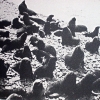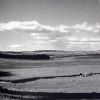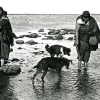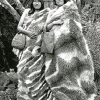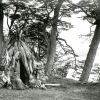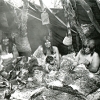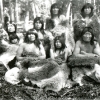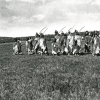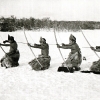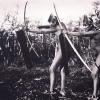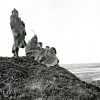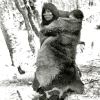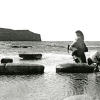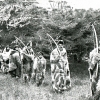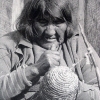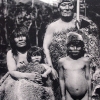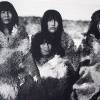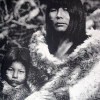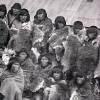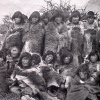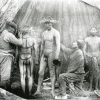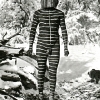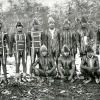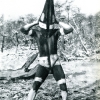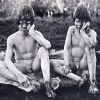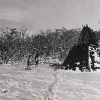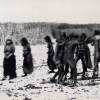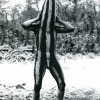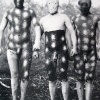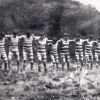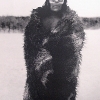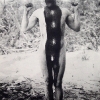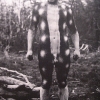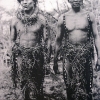Culto y Funebria
The Selk’nam had a complex ideology that was expressed through myths, legends, rites and intricate social ceremonies. They had a monotheistic religion that recognized a divine spirit, Temaukel, as supreme being. Temaukel existed before the world and men were created and was omnipresent, incorporeal and above all, distant. Members of the Selk’nam were expressly forbidden to mention this being directly and under no circumstances were to say his name. Temaukel, they believed, had created the world from the formless mass and the starless sky, and had passed down the laws of conduct to men through Kenós—a corporeal being, noble and irreproachable, who shared no kinship with Temaukel. Kenós had been charged with populating the earth and endowing it with life and happiness. According to the Selk’nam, Temaukel and Kenós were the only inhabitants of the heavens, making it likely that their religion was worldly—the people did not look beyond the reality of earth and did not prepare themselves for a life beyond. Worship was a private, though minor, matter to the Selk’nam, who never had any public forms of worship.
Foremost among Selk’nam rites was the Hain, which has its origins in a Selk’nam myth that tells of a time when women reigned supreme through a matriarchy in which females ruled the males, forcing them to work to provide subsistence while the women took their leisure. The story tells how the men discovered they had been tricked and then murdered all of the women initiates. To prevent the resurgence of female power, they introduced the Hain, a secret society from which women were excluded. The Hain ritual served a four-fold social purpose, being used as a rite of passage for young Selk’nam males, known as the Klóketen; to ‘instruct’ women through the representation of male domination; to gather the group together; and to act out a ritual that was crucial to Selk’nam society. Little is known about Selk’nam burial customs, as few burial sites have been identified. Because they moved around frequently, the people may have buried their dead in an ad hoc manner, and not in identifiable burial sites. The humidity of the region may also have allowed buried bodies to decompose more quickly.



